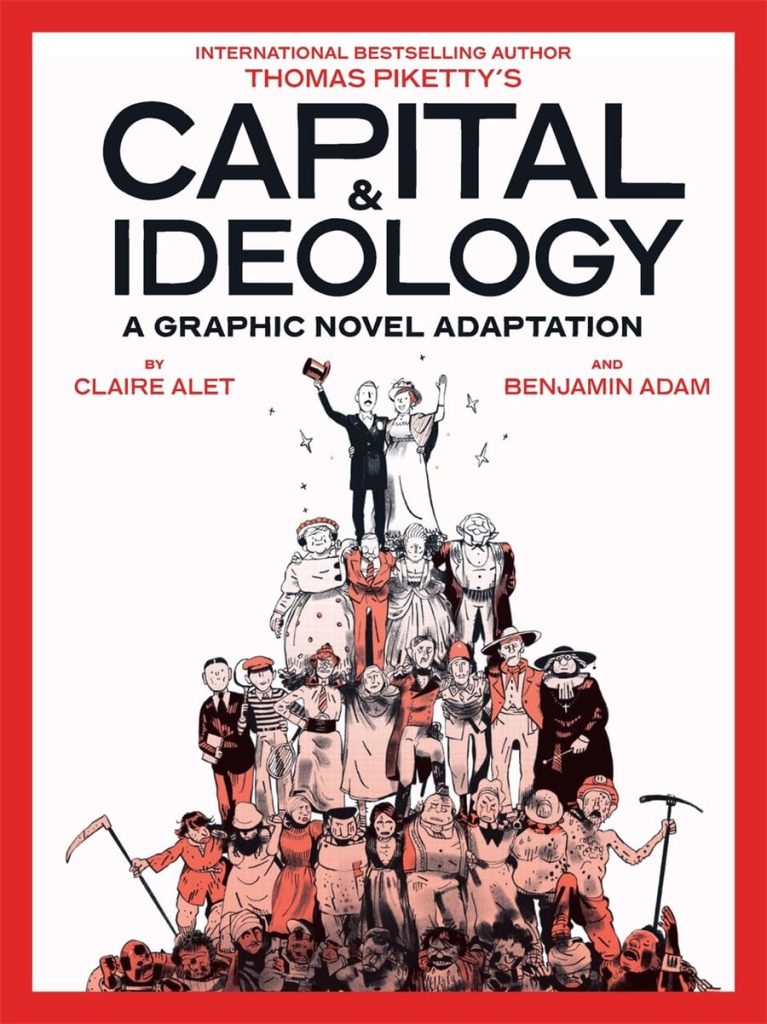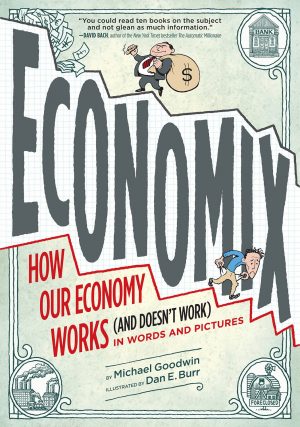Review by Ian Keogh
Why are some people poor and others rich? The obvious answer is that some have poorly paid jobs, survive on state payments, or lack the capability to work, while others have high paid jobs or live on inherited wealth. It’s more complex than that, though, and in book form Thomas Piketty’s Capital & Ideology was an extensive explanation as to why.
This graphic novel version takes an unusually slapdash approach to credits, by not acknowledging a division of labour, important because this by no means a straight adaptation, which is the writer’s innovation, presumably Claire Alet. However, just because Benjamin Adam has a small credit for the cover art doesn’t mean he didn’t contribute to the writing. Greater clarity in future, please, Abrams.
Piketty’s original book was a thorough uncovering of the political ideology and inaction that sustains inequality at best, poverty in most cases, and homelessness and starvation in the worst examples. Alet takes these complex economic and social investigations and personalises them by spotlighting members of the same wealthy family through the ages as the big topics of assorted eras are discuessed. In 1901 Jules rails against the introduction of a progressive income tax where people pay more if they earn more, but the family extends to the present day and the oldest of them lives in the 18th century, when the family are already wealthy.
Personalising complex economic and political activities is smart on Alet’s part as showing the effect on people ensures the distinctions are more easily understood. Importantly, they’re not just mouthpieces as family dramas are constructed around circumstances, and changing times are indicated via lines of dialogue. Using a wealthy family may at first seem counter productive, but the reason is that despite differing political ideologies, in a capitalist society few decisions impact on the wealthy over the long term. Some wealth is lost through taxation, but family wealth is more likely to diminish via splitting inheritance over multiple children. As times move on, the cast are spread over the world to investigate social and economic action outside Europe, noting, for instance how India greatly reduced social inequality, and how from President Reagan onward it greatly increased in the USA. There the wealth of the poorest 50% has barely increased since the 1960s, while the richest 1% have seen their earnings balloon.
Aler and Adam break down Piketty’s explanations into a form not requiring a degree in economics to understand, which is some achievement. Even so, it’s a densely packed extrapolation throwing out information like sweets at Halloween, so perhaps best absorbed in small sections for better comprehension. Credit is also deserved for Piketty not only pointing out what’s wrong, but ending with six proposals that if implemented would raise social equality globally.
This is an immense work detailing the issues clearly, concisely and comprehensively. Will we now elect the politicians committed to bringing about genuine reform?





